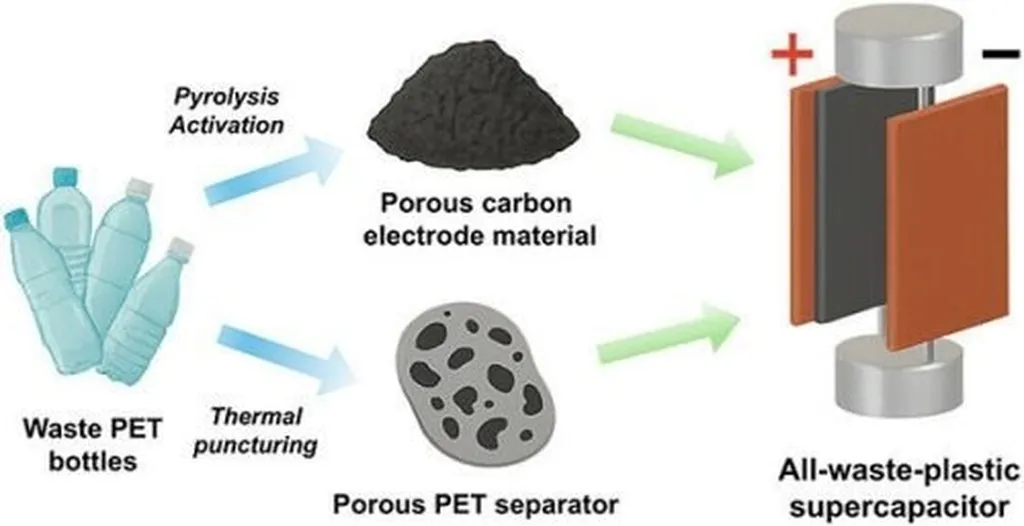In a groundbreaking development that could revolutionize the energy sector, researchers have successfully created an anticorrosive adhesive film using recycled polyethylene terephthalate (rPET), offering a low-cost solution to combat corrosion in industrial applications. The study, led by Hugo G. Palhares, was recently published in the journal ‘Materials Research’ (translated from Portuguese).
Corrosion is a significant challenge in the energy sector, leading to substantial maintenance costs and potential safety hazards. Traditional anticorrosive solutions often rely on expensive materials and complex processes. However, this new research presents a promising alternative by leveraging recycled PET, a material abundantly available from post-consumer waste.
The team employed a thermomechanical processing route to incorporate plasticizers into PET films, aiming to enhance their anticorrosive properties. “We were particularly interested in exploring the potential of plasticizers to improve the film’s performance,” Palhares explained. “This approach not only addresses environmental concerns by recycling PET but also offers a cost-effective solution for corrosion protection.”
The researchers conducted a series of characterization tests to evaluate the thermal, mechanical, electrochemical, and anticorrosive properties of the PET-based films. Surprisingly, the 100% PET sample demonstrated superior mechanical and corrosion resistance compared to the plasticized versions. “The 100% PET sample performed exceptionally well, even outperforming some benchmark tapes commercialized by industry leaders like 3M,” Palhares noted. The films maintained impressive impedance values consistently above 10 GΩ.cm² for frequencies below 1 Hz and exhibited a phase angle near 90º over a broad range of frequencies in Electrochemical Impedance Spectroscopy (EIS) tests.
The implications of this research are far-reaching for the energy sector. By utilizing recycled PET, companies can reduce their environmental footprint while also cutting costs associated with corrosion prevention. The study suggests that further optimization of the plasticizer content and processing conditions could enhance the film’s performance even further, paving the way for more sustainable and efficient anticorrosive solutions.
As the energy sector continues to seek innovative and eco-friendly materials, this research offers a compelling example of how recycling and advanced processing techniques can drive significant advancements. The findings not only highlight the potential of recycled PET in anticorrosive applications but also underscore the importance of interdisciplinary research in addressing global challenges.
With the publication of this study in ‘Materials Research’, the scientific community now has a robust foundation to build upon, potentially leading to new developments in corrosion protection and sustainable materials science. As Palhares and his team continue their work, the energy sector can look forward to more breakthroughs that will shape the future of anticorrosive technologies.

